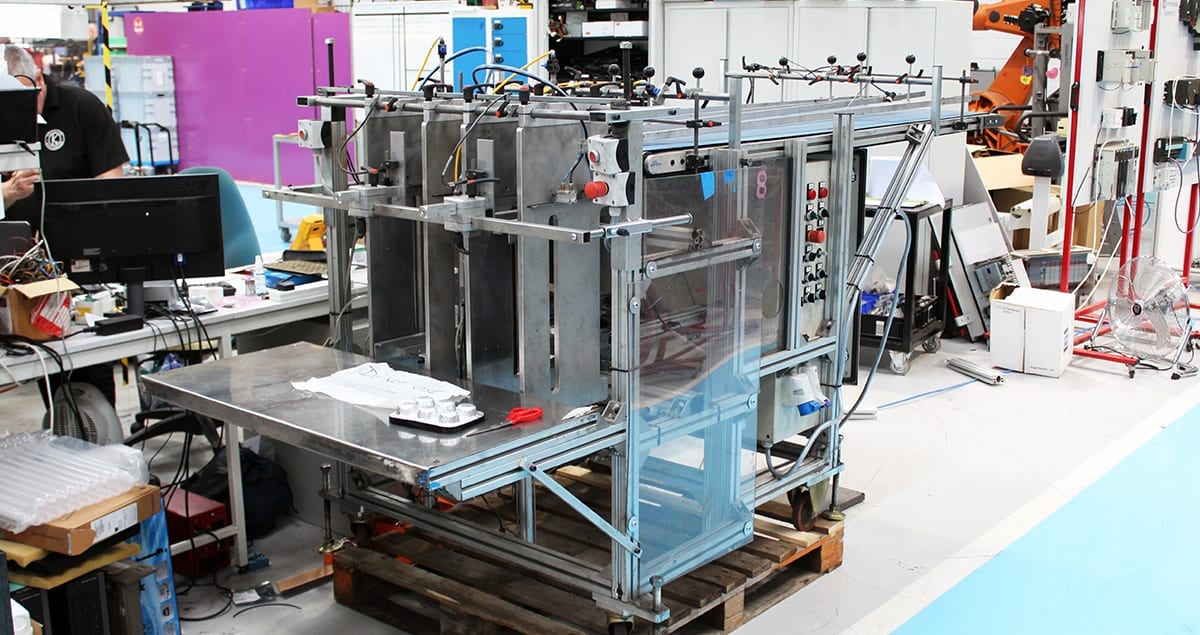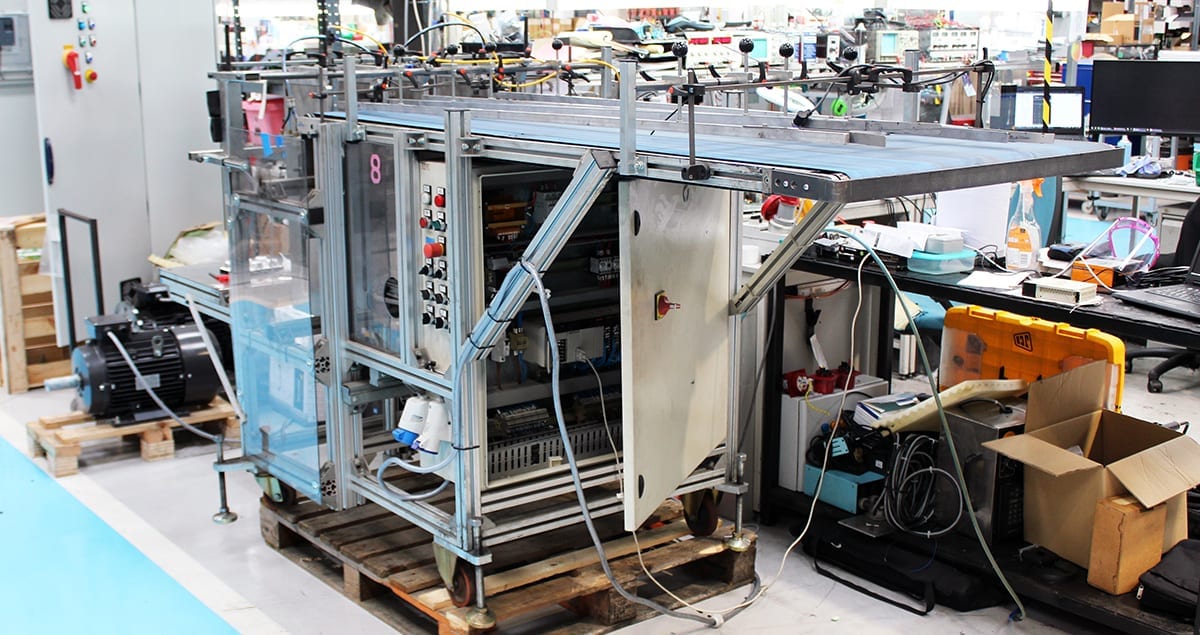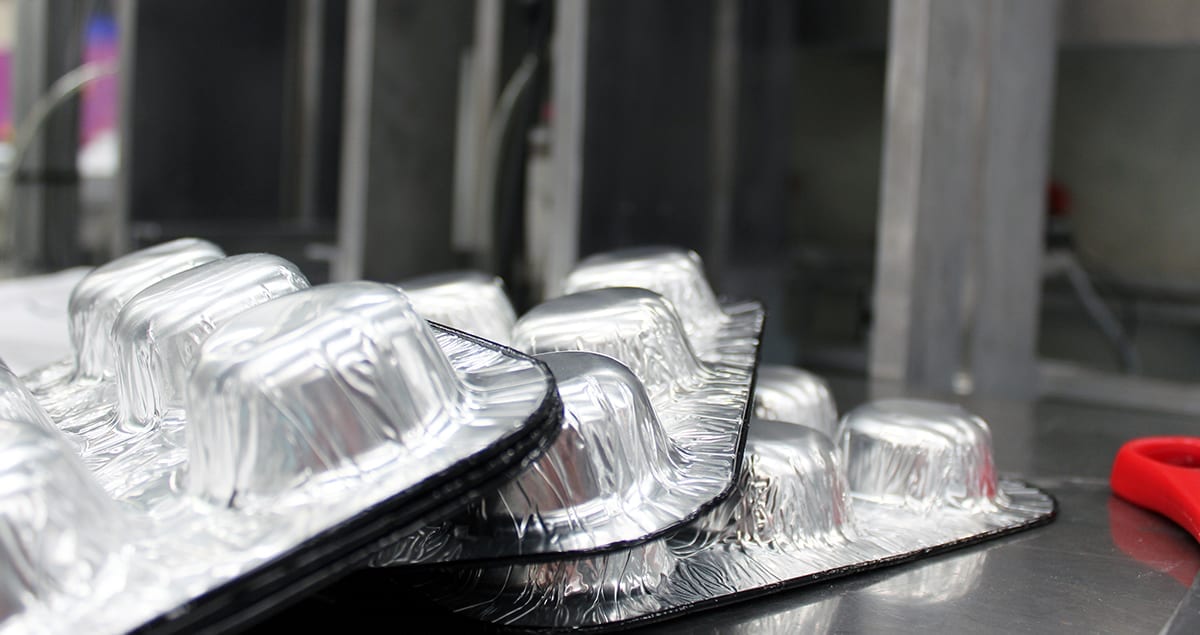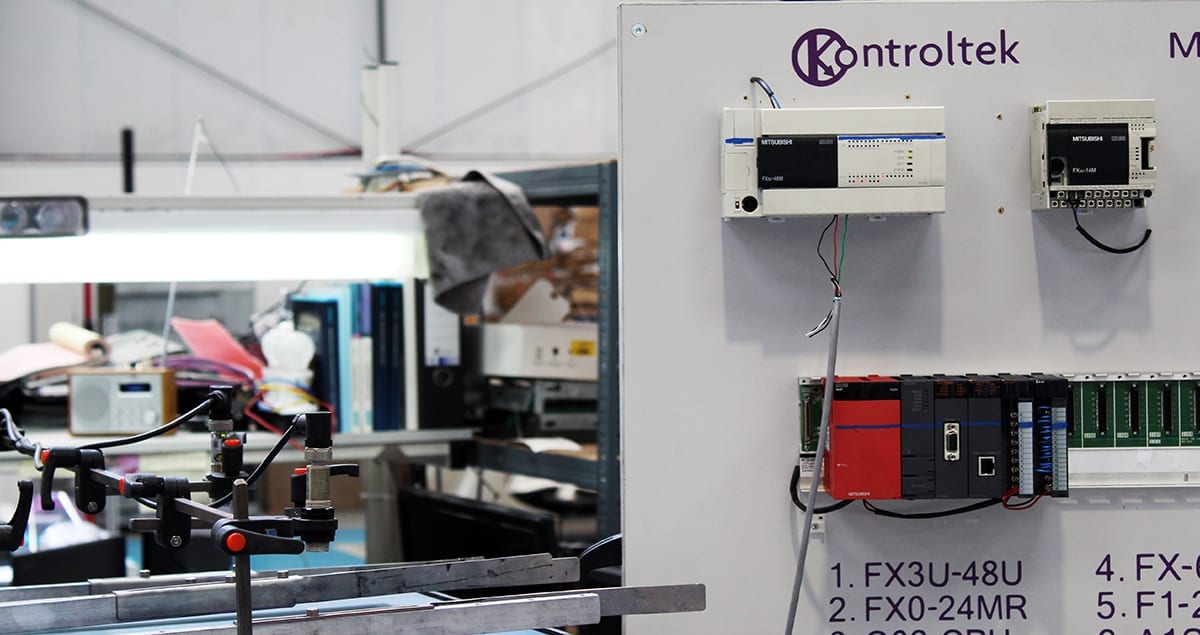Case Study: Aluminium Container Manufacturer
Repairing an Aluminium Foil Tray Stacker
Rob Phillips, an engineer and member of our Research & Development Department, has been working closely with this customer for over five years.
The customer recently had an issue with one of their machines, so Rob talked us through the process of getting it repaired for them.
The Customer
The customer is local to the Kontroltek workshop based in Bridgend.
The company manufactures aluminium foil containers, board lids and other packaging products. Unfortunately, one of their two-lane aluminium foil tray stackers was failing.


A counting sensor found on the conveyor. This counts the foil trays as they pass under, until a full stack is ready.
What’s the Problem?
The stacker’s job is to receive products from a press and transport them through on a conveyor belt. The products are counted by sensors and stacked in a hopper until the specified count is reached. It then ejects the stack for an operator to remove, ready for packaging and delivery elsewhere in the factory.
Rob was invited out on-site to inspect the issue and attempt to diagnose the problem. It was difficult because the machine was over 20 years old and unbranded.
At first, Rob thought it could have been the relays that were failing — a common fault with these machines. For the age of the machine, the resistance of the relays would have been worn down significantly due to the years of operation. But it wasn’t that.
Whilst running the machine, Rob highlighted that the more functions the machine was tasked with, the number of problems increased. These included miscounts of trays stacked, ejection problems and the hopper not moving.
Rob diagnosed the problem as a power issue. The more power that was drawn, the more the machine failed. The power supply that runs the PLC would either need repairing or replacing.
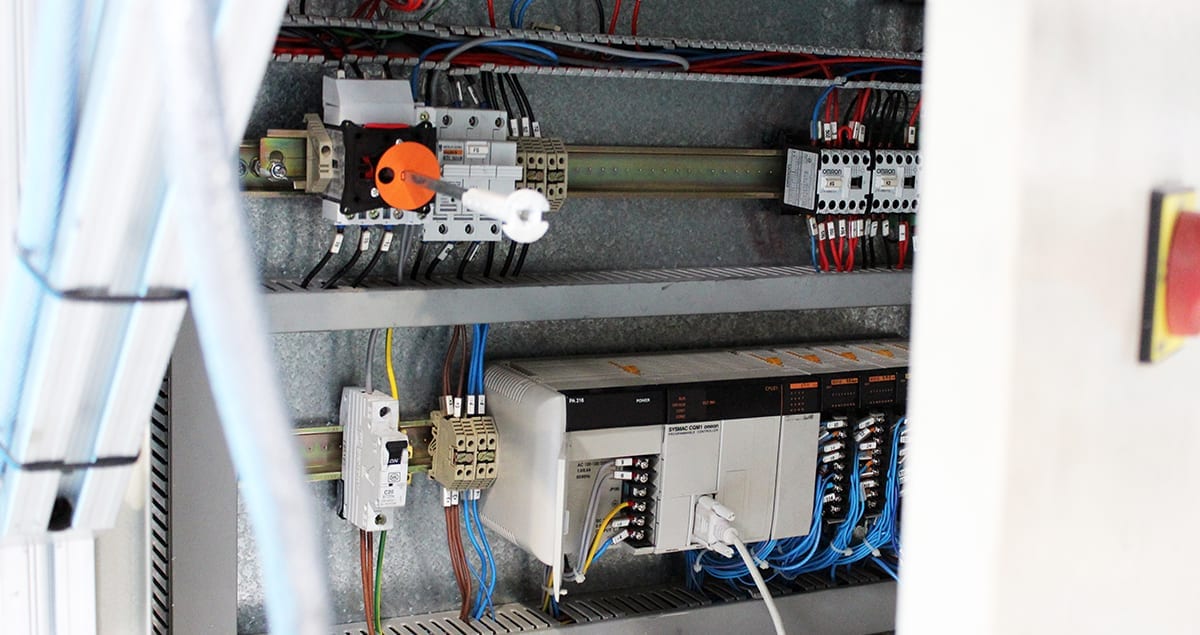

Upon inspection of the conveyor, Rob found the issue to be linked to power supply and sensor count.
The Solution
Rob made the recommendation for the machine to be transported to the local Kontroltek workshop because it was having issues with its sensors and wiring too. It would be easier to repair in the workshop.
As a PLC engineer, Rob is familiar with different PLCs and servicing them. He checks and test the modules, from the power supply, processor and the I/O system. He changes out any faulty components and replaces them to give a complete overhaul.
He goes through the rest of the machine to check the wiring and replace any which may be damaged. He also tests the sensors and replaces any which are faulty. As the machine is portable, some of the switch gear has been damaged from clashes so he either services or replaces these too.
To test the repair, he programmed a PLC on our Mitsubishi PLC test rig in the workshop to send signals to the stacker. This simulation recreated the environment that the machine operated in. No need for any aluminium trays to carry out the testing.
He ran the machine for a few hours, allowing it to go through various test cycles. He set different counts to monitor if the machine was stacking correctly.
Once satisfied, Rob arranged for the machine to return to the customer’s plant.
When the conveyor was fixed, Rob used the Kontroltek Mitsubishi test rig (Using a FX3U-48U PLC) to emulate a real scenario and ensure the conveyor was running smoothly and counted off units as it should.
The Numbers
Rob only spent a couple of hours on-site to identify the issues and arrange what to do next.
In the same week, the machine was delivered to the Kontroltek workshop from the customer’s plant.
Due to the age, lack of branding and information, it was difficult for Rob to quote for repair. He waited until he could spend half a day in the workshop to diagnose the problem and do some research before providing the customer with a quote.
Rob determined that the machine would have cost a minimum of £5,000. When searching for aluminium foil tray stackers, you can find machinery costing up to £20,000.
Rob quoted a figure between £600-1,000 to carry out all the work. From the PLC repair to the wiring and sensors. The customer gave the go-ahead immediately after.
The task of quoting is never straightforward. The cost may vary because of the machine, the issue, the time it takes, the cost of new parts and so much more. Therefore, it’s difficult to ever provide identical two quotes.
The contrast in price between buying new or repairing an existing machine is enough for most customers to choose the latter.
Whilst working on other jobs and visiting other customers on-site, Rob repaired the machine within two days. After testing, he wrote up the 12-month warranty for all electrical the work he had carried out on the machine.
The aluminium foil tray stacker was then safely returned to the customer for use.

